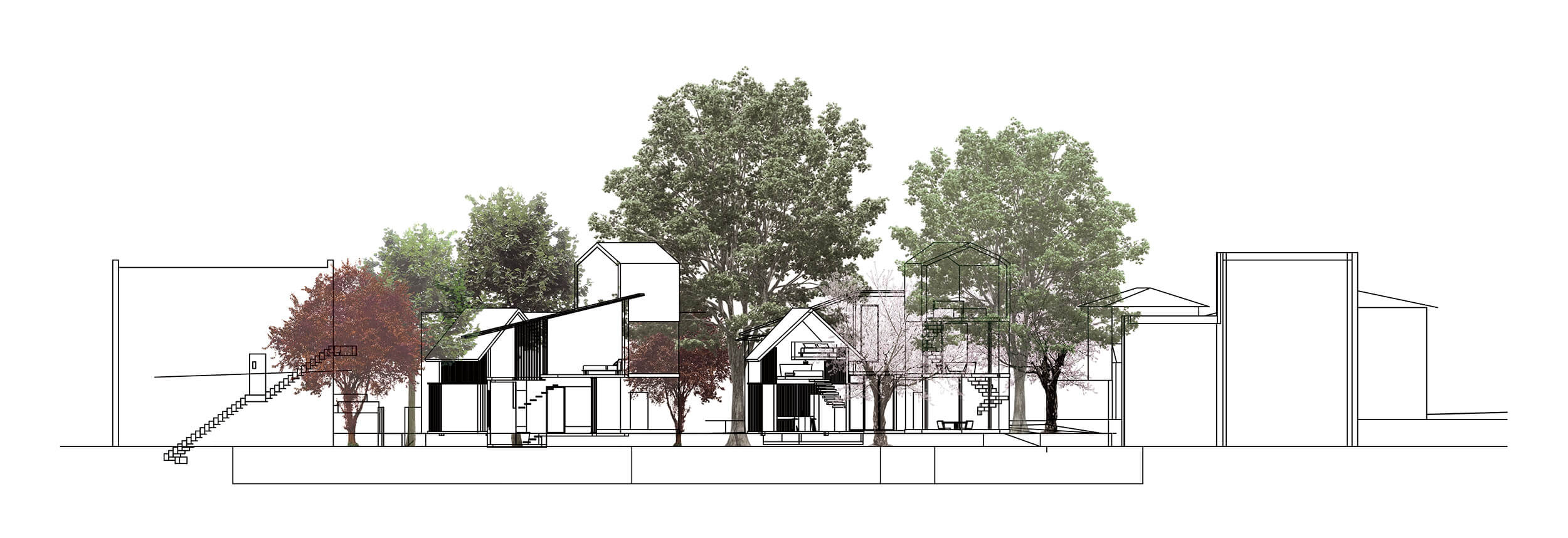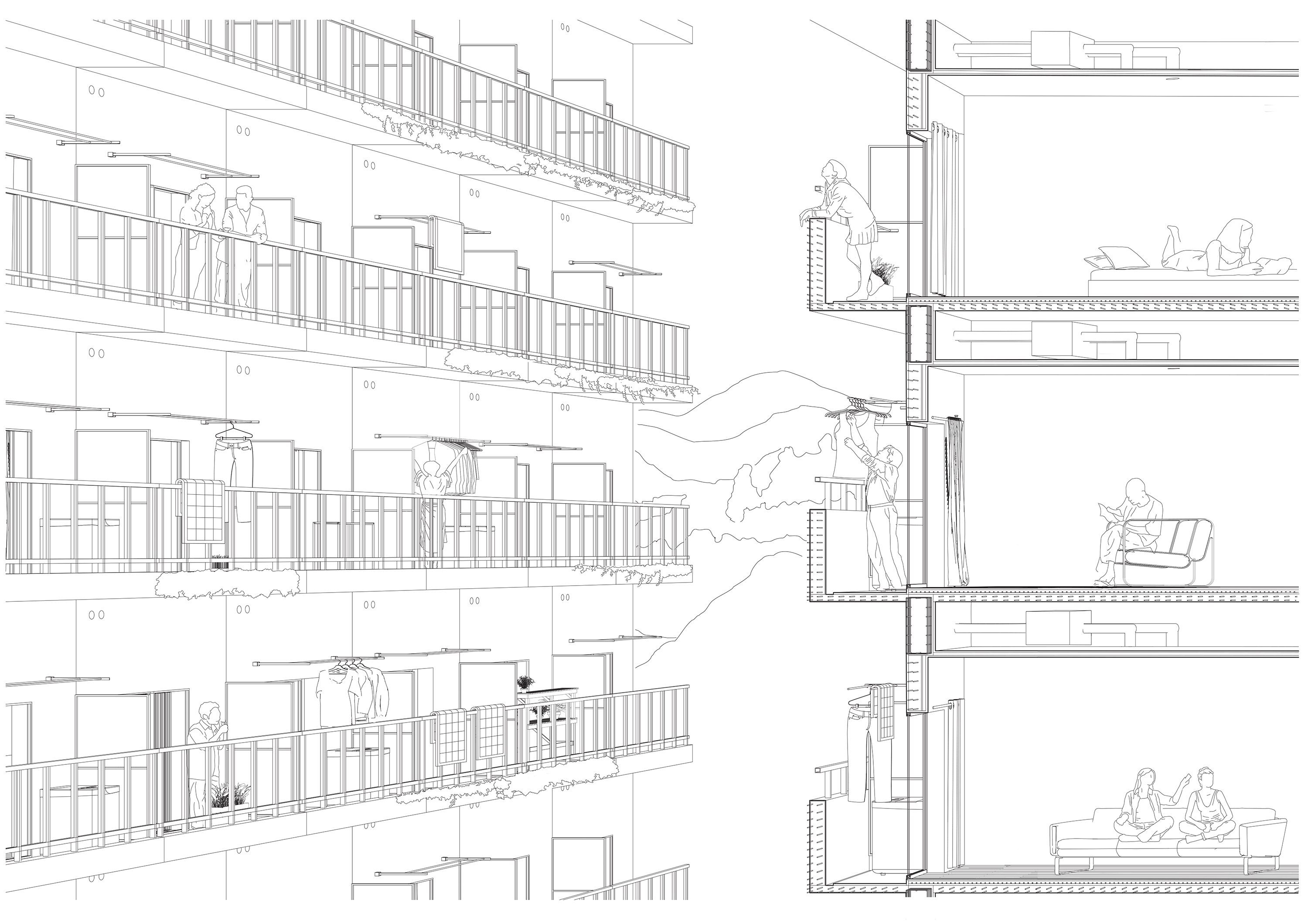MORI IN JIYUGAOKA
During the mapping of the various activities, we found that Jiyugaoka has a very season- al characteristic. The areas change over time, from morning to evening during the day and from weekdays to weekends.
Jiyugaoka is known for its trendy, fancy and cute shops and cafe’s that are targeted more towards the women and yet promise to offer a quality ‘Den-en-chofu’ lifestyle to its residents.
In our study, we found that there are not that many gardens or green spaces and this inspired us to create an accommodation that allows one to ‘escape’ into a ‘forest’ in the heart of Jiyugaoka.
The design is an accommodation that personifies ‘living in the forest’. It amplifies luxury living in Jiyugaoka and gives its visitors a feeling of sleeping amidst the trees and isolation in the otherwise crowded surroundings. Through our design we wish to bring back this feeling, to show how import- ant it is to get lost in these experiences and just get away from all the hustle and bustle of everyday life and enjoy the solitude while im- mersed in green.
Student: Disha
Partition
The history of the exterior partition-wall in the Japanese house seems to run in an opposite direction to the modern European one: from a succession of spatially differentiated thresholds to an overall technical ensemble. In the pre-modern period the building envelope was defined by its rich depth, which often embraced the entire house and its garden, forming a multi-layered and porous interaction between outside and inside. The enclosure of the post-war Japanese house, on the other hand, is reduced to a solid wall assembled out of mass-produced elements, leading to the collapse of the spatial multi-layeredness and its replacement by several functionally clearly delimited elements, namely the compact wall and its various openings, such as sash windows, air-conditioners, steam outlets, etc. In recent condominiums the wall has become defined by its increasing technological dependence, with a double, often contradictory goal: an ideal tightness of the enclosure and a series of highly controlled openings, gradually cutting off the inhabitants from their natural outside environment while creating a highly artificial one on the inside.
Laundry
The coin laundry is a space of negotiation between the intimacy of private life and the public realm. This negotiation happens at different scales: in the drums, shared and used by the various publics for the washing and drying of personal items; in the aisles of the laundry room, where ones clothes are deposited in full view of everybody else; in the laundry space itself, where strangers spend long moments together; or through the window frontage, where the laundry users are exposed to passers-by. These fragile relationships are most visible when the boundaries are trespassed, provoking shame, fear, shock, inappropriate curiosity, or even love.

